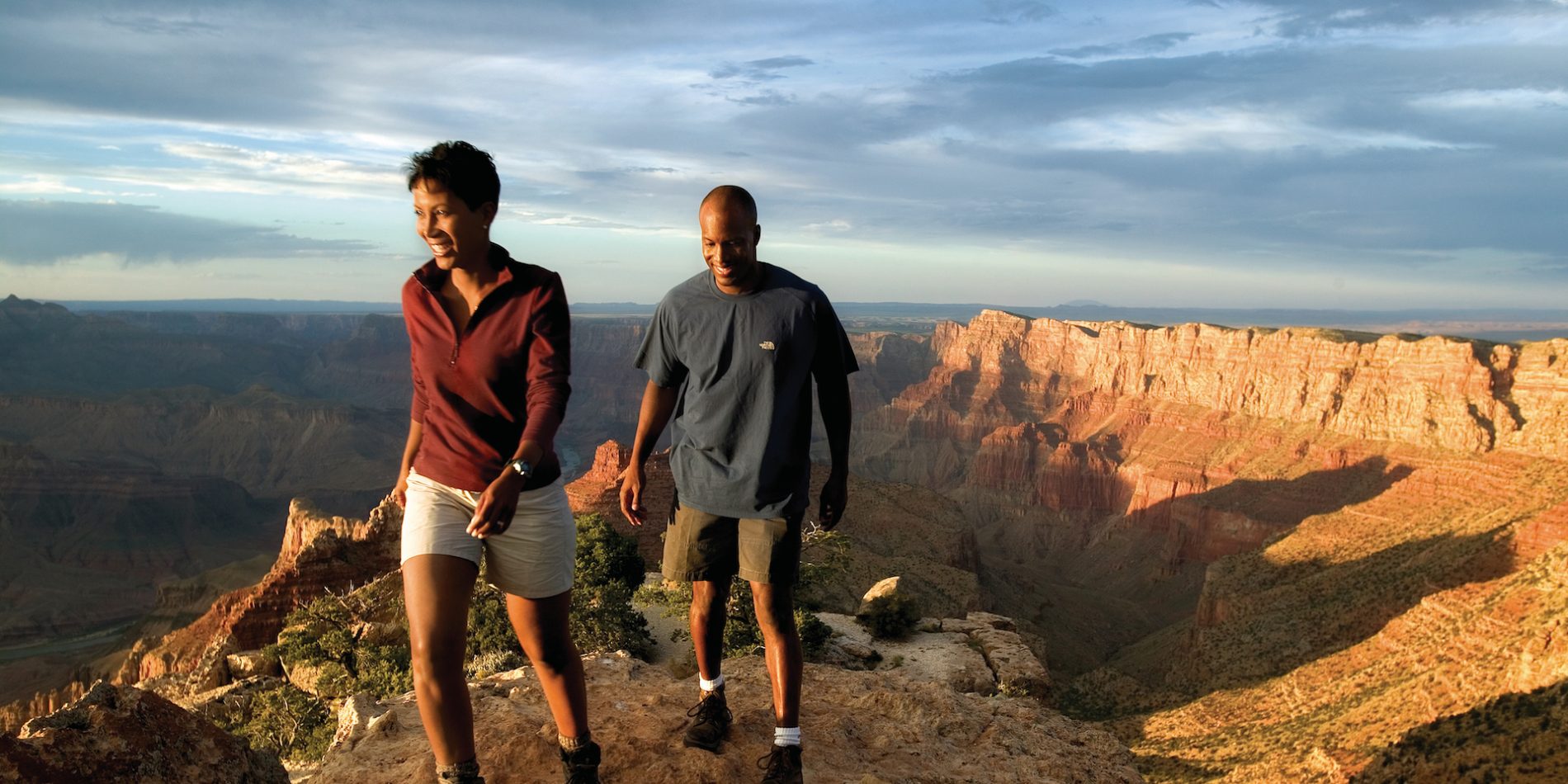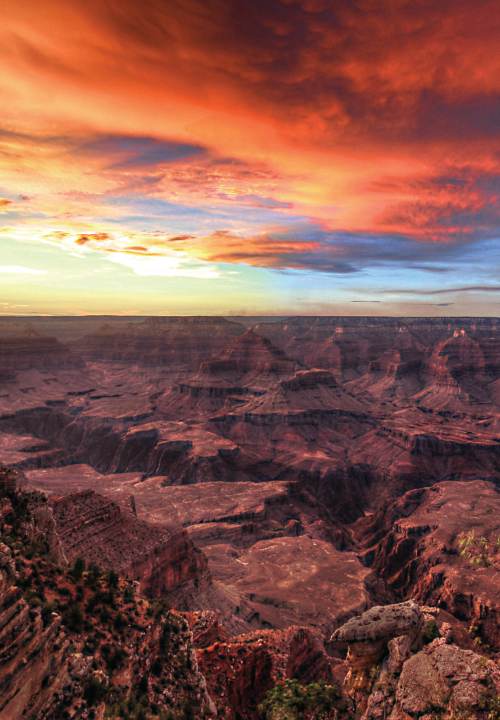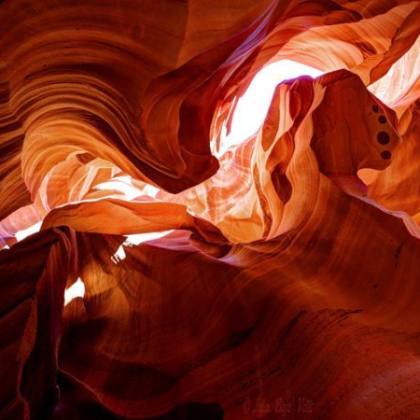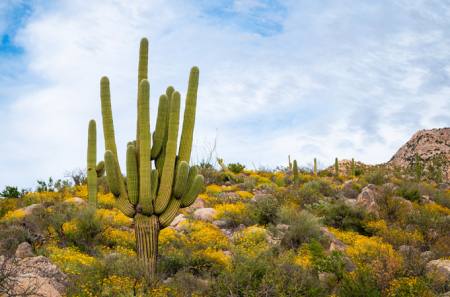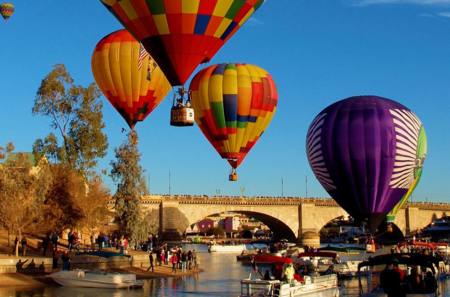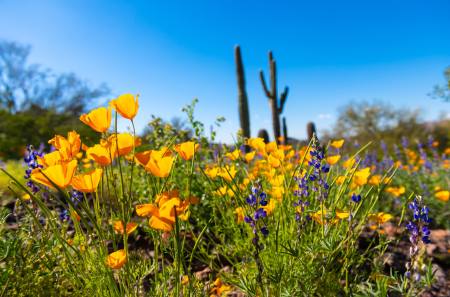Before you pack your bags and make the trip to Grand Canyon National Park, a few words of practical advice:
When to go
With the kids out of school, summertime is undoubtedly the busiest time of year, making peak season at Grand Canyon between June-August. If you're staying during this time, be sure to book your lodging early, as reservations start filling up nine months to a year in advance.
For cooler weather, lighter crowds and better lodging availability, plan your trip during the shoulder seasons between March-May, and September-November.
South Rim or North Rim?
According to the Grand Canyon National Park's official page, though the width of the canyon is roughly 10 miles, driving from the South to North Rim can take at least five hours on a route that sometimes dips south through Tusayan and even Flagstaff before turning back north through Cameron or Bitter Springs. Hiking rim-to-rim is possible but is recommended only for the experienced hiker. (See "Grand Canyon Hiking" for more trail options.)
South Rim
Most easily accessible from Phoenix, Sedona or Flagstaff, the South Rim welcomes more visitors than the North Rim and offers the most amenities and attractions in terms of lodging, dining, tours, transportation, viewpoints and family-friendly experiences. It is also open year-round. As this area tends to be much busier—particularly during peak season—be sure to book reservations well in advance.
North Rim
Quieter, more remote and offering fewer visitor services, this rugged portion of Grand Canyon National Park experiences fewer visitors and offers a more outdoor-minded experience. Due to its higher elevation, the North Rim is also cooler in temperature and experiences heavy snowfall in winter, resulting in a shorter season. (It's open from mid-May through mid-October.)
Quieter, more remote and offering fewer visitor services, the North Rim experiences fewer visitors and offers a more outdoor-minded experience.
Where to stay
Bring your tent or RV to enjoy the great outdoors at one of the many campgrounds in the park.
Two of the three National Park Service campgrounds accept reservations: Mather Campground on the South Rim and North Rim Campground. Desert View Campground on the South Rim (open seasonally between mid-April and mid-October) is first-come, first-served, and Trailer Village is a concessioner-run RV park with full hook-ups.
If roughing it isn't quite your style, Grand Canyon National Park Lodges operates numerous hotels, both inside and outside the park.
Located at the top of Bright Angel Trailhead, the historic Bright Angel Lodge & Cabins, designed by Mary Colter in 1935, provides rustic accommodations close to outdoor adventure. Take your pick from budget-friendly lodge rooms with shared bathrooms, standard lodge rooms or private cabins (one of which was home to one of Roosevelt's "Rough Riders").
Perched on the edge of the South Rim, the European chalet-style El Tovar Hotel, which opened in 1905, offers spectacular views, one-of-a-kind rooms and suites, and fine dining in the famous El Tovar Dining Room.
Just a mile from the entrance of the park, The Grand Hotel at the Grand Canyon is the area's only Three-Diamond hotel, and the rustic chalet-style hotel offers an indoor heated swimming pool and hot tub, a steakhouse and saloon, and plush rooms with a kitchenette.
Meanwhile, Thunderbird Lodge and Kachina Lodge are popular choices for families, due to their casual, modern aesthetic and convenient location within walking distance to many of the park's attractions.
On the North Rim, book one of the cozy cabins at the historic Grand Canyon Lodge to stay amid towering pine trees and just steps away from the scenic Bright Angel Point Trail. This landmark lodge boasts cliffside views and an on-site restaurant serving up hearty, regionally inspired dishes such as venison meatloaf and wild rice primavera.
Getting around
Take advantage of the Grand Canyon National Park's free shuttle buses that operate on set routes throughout the park along the South Rim, including:
- the Village (Blue) Route, connecting the visitor center with lodging and other facilities;
- Kaibab Rim (Orange) Route, a figure-eight route between the visitor center and five scenic viewpoints;
- Hermit Road (Red) Route, connecting Grand Canyon Village and Hermits Rest, with scenic overlook stops along the way; and
- the Tusayan (Purple) Route, a park-and-ride service between the community of Tusayan and the park.
The early-morning Hiker's Express Shuttle transports hikers to the South Kaibab Trailhead from Bright Angel Lodge, the Backcountry Information Center and the Grand Canyon Visitor Center. For a $90 fee, the privately run Trans-Canyon Shuttle takes visitors between the North and South Rims.
You've arrived
You made it to the Grand Canyon. Welcome! Now what? We have you covered here, too. Read on to discover our three-day, activity-filled Grand Canyon itinerary—perfect for newcomers and returning visitors.
